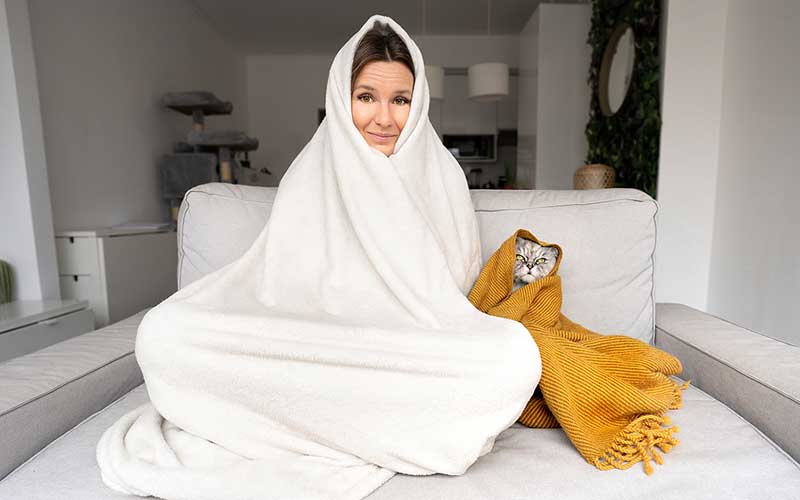
Many New Englanders ask themselves why their heating bill is high every winter when the cold weather hits their wallets especially hard. And now with natural gas and oil prices skyrocketing, this winter it is especially hard. Here are some common reasons heating bills spike and some extra tips for keeping it low.
Make sure doors are properly fitted
If you can see daylight under an outside door, air is escaping directly outside. You can add weather stripping or easily install a draft guard. If you need to heighten the door, turn the screws in the hinges counterclockwise — but make sure you don’t interfere with the opening/closing of the door.
Houses lose heat from many obscure sources
- Attic access doors can be often forgotten about and allow heat to escape even if your attic is well insulated. Make sure that there is proper insulation between the access door and the attic itself. If the door is warped, install a better latch and bolt system to keep it fully shut.
- Look for weak spots in places where electrical wiring or plumbing enters the house. Insert caulking to points where pipes enter the house — and remember to redo it if it’s old.
- Electrical boxes in exterior walls also can lack proper insulation. Remove cover plates to switches and outlets and use caulking or foam insulation to cover gaps in the insulation. Before replacing, install foam gaskets over the over the electrical box.
- It’s important to close chimney flues, but they won’t totally protect from heat loss. You can also purchase a chimney balloon — an inflatable insert for your chimney, which further blocks loss of heated air.
If you’re low on cash, talk to your energy supplier about free cavity insulation. If you’re currently renting and can’t make any structural changes, still talk to your landlord! He or she might be able to make those necessary changes. If your heating bill is especially high, he or she might be willing to discuss putting a cap on your bill and reimbursing you for overages.
Maintain air circulation inside
If you have a sofa directly in front of the furnace in your living room, it’s probably blocking the airflow. This means that the back of your couch is getting nice and warm while the rest of your room is remaining slightly chilly.
If you have a newer home with central air, make sure that air registers aren’t being blocked by rugs. Keep warm air where you need it by closing vents in rooms that aren’t be used. If you have vent fans, (in the kitchen to ventilate smoke or in the bathroom to reduce humidity), try to use portable fans instead. Vent fans like these funnel warm air directly outside.
Use a programmable thermostat — and use it well
Prices on programmable thermostats have been dropping and can be very affordable. If you’re new to this type of technology you might want to get some help learning how to set the schedule. When you’re setting your schedule remember to keep it low! Each degree above 68 causes an approximate usage increase of 3%.
Once set up, the heat will automatically turn down when you’re away or asleep. You might not like the thought of sleeping in a cold house, but keep in mind that while you’re sleeping you have the advantage of lying under blankets, which wouldn’t be feasible during the day. Plus, it’s a myth that furnaces have to work harder to reheat a cool house rather than maintain warm temperatures.
Stop relying on your thermostat and heat the space you’re using
Instead of using the furnace to heat your entire house, turn down the furnace and use a space heater to heat the room you or your family are gathering in, like the kitchen or living room. Although this will cost you upfront and increase your electricity bill, many experts agree that it will save you. At night you can use an electric blanket or a hot water bottle wrapped up in towels or blankets. And the easiest solution is always wearing a thicker sweater and especially socks because your feet tend to get colder than the rest of your body fastest.
Windows can account for up to 25% of heat loss
Cover your windows in plastic film. It’s easy to purchase from home improvement stores and once applied, it’s hardly noticeable. Removal is easy and also won’t hurt the window trim. Keep the curtains/blinds open on the side of the house that’s getting sun, but closed on the sides that aren’t. Remember to close your curtains as soon as it gets dark out — which may be quite early in this season. Plus, it’s also good for privacy.
If you are losing a lot of heat out of your windows, then it might be a good idea to replace them. What you spend on replacing your windows will be made up for by all the energy you save.
Check these six possible reasons why your high heating bill is taking a chunk out of your savings. Then let us know if we can help you create a more energy efficient space.
